Vegetable upma is a savory porridge-like dish made using roasted semolina (also known as sooji or rava) mixed with sautéed vegetables, herbs, and spices. Popular across South India and Maharashtra, it's commonly served hot for breakfast or brunch, although many enjoy it as a light lunch or dinner. The texture is soft but not mushy, with a nutty and mildly spicy flavor profile.
Traditionally, the dish is prepared by first dry roasting the semolina, then cooking it with tempered mustard seeds, curry leaves, green chilies, and lentils such as urad dal and chana dal. Water is added to hydrate the rava, and vegetables like peas, carrots, and onions are stirred in to boost flavor and nutrition.
While it's commonly served plain with lemon juice or coconut chutney, variations include adding nuts, ghee, or even curd on the side.
Origins and Cultural Significance of Upma
The vegetable upma recipe finds its roots in the Southern states of India-especially Tamil Nadu, Karnataka, Andhra Pradesh, and Kerala-where it's considered a quick and reliable breakfast option. In fact, its name stems from two words in Tamil: "uppu" (salt) and "maavu" (flour or ground grain), essentially referring to salted flour or coarse grain porridge.
Its simplicity, versatility, and low-cost ingredients have made it a favorite in Indian households for generations. Many homes have their unique spin on the recipe, incorporating local spices and seasonal vegetables.
Over time, the dish has also gained popularity outside of South India, becoming a go-to breakfast for urban dwellers, office-goers, and health enthusiasts. In fact, discover great ideas like incorporating upma in Indian tiffin boxes or meal-prep kits to enjoy it fresh on the go.

Rava Upma Recipe
Ingredients
- 1 tablespoon Ghee
- 1 cup Semolina rava /sooji
- 1 Onion medium size finely chopped
- 1 Carrot chopped
- 3 tablespoon Green peas
- 2 Green chilies chopped
- 1 teaspoon Ginger grated optional
- 1 teaspoon Mustard seeds
- pinch of Asafoetida
- Curry leaves
- 1 teaspoon Urad dal split husked black lentil
- 9-11 Cashew nuts
- 10-11 Peanuts
- 1 teaspoon chana dal Split chickpeas
- Salt to taste
- 3 cups Water
- Lemon juice
- Coriander leaves chopped
- For Tempering
- 1 teaspoon Oil
- 1 teaspoon Mustard Seeds
- 3-4 Red Chilies Whole
- Curry Leaves
Instructions
ROAST SOOJI/SEMOLINA
- Heat a pan and add a cup of rava or semolina in it. Now, keep the heat medium-to-low and roast the rava. Keep stirring the rava in between to avoid over-roast. Roast it until it has an earthy smell and looks dry and crisp.
- When the rava is well roasted, switch off the heat and keep it aside. * {if you are using roasted semolina You Can start from step below}.
- In the same pan, add a teaspoon of ghee. Now, add cashew and peanuts in it. Allow them to roast for a few seconds and then take them out on a plate.
- In the same pan add a pinch of Hing in it. Add mustard seeds and allow it to crackle. After that add chopped green chilies, grated ginger and chopped onions.
- Allow the onions to be golden brown and then add urad dal, chana dal, and a sprig of curry leaves in the pan.
- Cook them for a minute * {if you are using my Instant mix recipe as I mentioned in the post You Can start from step below}.
- Now add boiled peas, carrots. Cook the vegetables for a minute or two and add rava in it.
- Mix all the ingredients well and pour water in the pan.
- Keep stirring the pan for even cooking. Stir and mix for few minutes and add salt to taste.
- Cover and cook 'til the water is well absorbed.
- When done, sprinkle a few drops of lemon juice and mix well.
- In a separate tadka pan, add a teaspoon of oil, mustard seeds, broken red chilies and a sprig of curry leaves. Quickly pour the tempering over the upma.
- Pour the tadka for that aromatic flavor and serve hot.
Notes
- Different types of sooji/semolina take a different amount of time and water, the water may take some time to absorb.
- If you like to eat it soft upma, then add exactly 3 cups of water to 1 cup of rava. This will give perfect softness preventing it to get dry.
- Also, to make the perfect upma, always use the same measuring cup to measure the water that you are using to measure rava.
Health Benefits of Vegetable Upma
Nutritional Profile of Ingredients in Upma
The vegetable upma recipe isn't just tasty-it's also incredibly nutritious. Each ingredient contributes unique health benefits, making upma a smart choice for a balanced breakfast.
Let's break it down:
| Ingredient | Nutritional Value |
|---|---|
| Semolina (Rava) | High in iron, low in fat, moderate carbs |
| Onions & Carrots | Rich in fiber, vitamin A, and antioxidants |
| Green Peas | Source of plant-based protein and folate |
| Ginger & Chilies | Anti-inflammatory, boosts metabolism |
| Lentils (Urad, Chana Dal) | High protein, digestive fiber |
| Cashews & Peanuts | Healthy fats, minerals, and energy |
| Curry Leaves | Supports digestion and cholesterol control |
When cooked with minimal ghee or oil, upma offers a low-calorie, nutrient-dense meal perfect for weight management.
The dish is also a good source of complex carbohydrates, which provide sustained energy throughout the day without spiking your blood sugar levels-ideal for diabetics or those following a controlled diet.
Why Upma is Great for a Balanced Diet
If you're watching your calorie intake or trying to eat more whole foods, vegetable upma can be a smart inclusion in your meal plan. Thanks to its flexible ingredient list, it's easy to customize according to dietary needs:
- Vegan-friendly: Use oil instead of ghee.
- High-protein: Add extra lentils or tofu cubes.
- Low-fat: Skip the nuts or reduce the oil used in tempering.
- Fiber-rich: Incorporate vegetables like spinach, zucchini, or bell peppers.
Moreover, the slow-digesting carbs from semolina help maintain satiety, reducing mid-morning snacking. For busy professionals and families, it's a time-saving and wholesome solution that doesn't sacrifice nutrition for speed.
Key Ingredients in Traditional Vegetable Upma Recipe
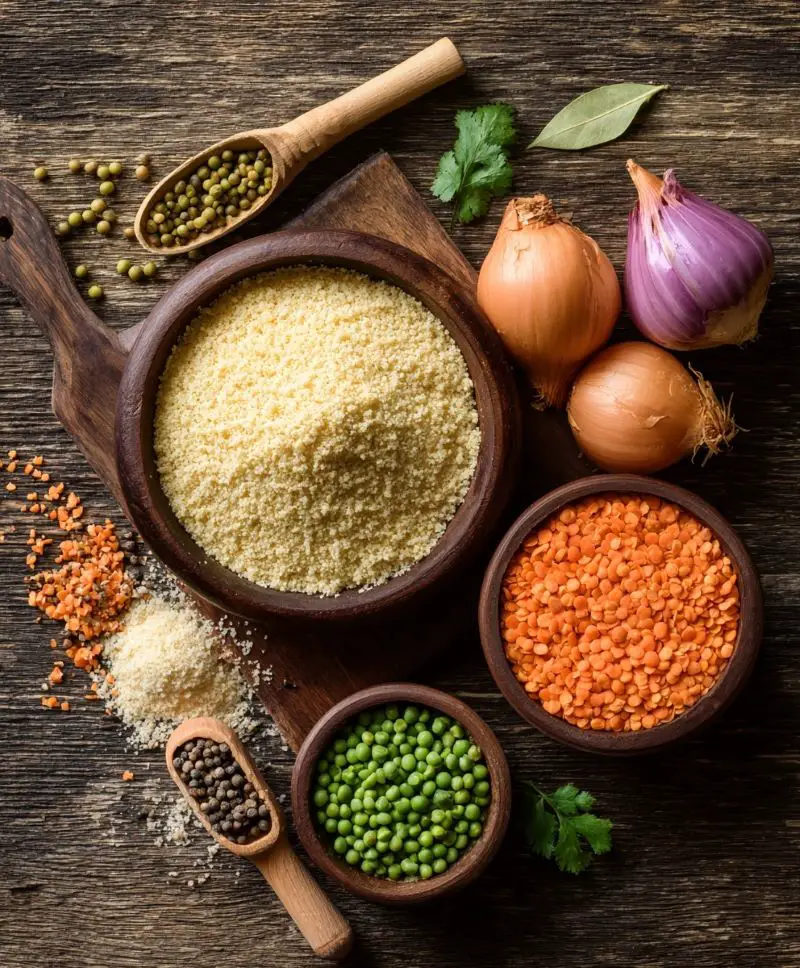
Overview of Sooji (Semolina) and Its Role
At the heart of any vegetable upma recipe is sooji-also known as rava or semolina. Made by coarsely grinding durum wheat, semolina is light yellow in color, granular in texture, and known for its ability to absorb flavors beautifully.
When dry-roasted, sooji develops a nutty aroma and becomes the perfect base for a fluffy, non-sticky upma. It's rich in iron, low in saturated fat, and serves as a healthy complex carbohydrate source that keeps you full longer.
There are different types of semolina available in stores:
| Type of Rava | Texture | Best Use |
|---|---|---|
| Fine Rava | Soft, powdery | Idli, kesari, soft upma |
| Medium Rava | Coarse | Ideal for traditional upma |
| Roasted Rava | Pre-toasted | For quicker prep and storage |
For the vegetable upma recipe, medium or roasted rava is usually the best choice. It toasts evenly and gives that characteristic grainy but soft texture.
Vegetables, Lentils, and Spices That Add Flavor and Texture
Upma isn't just about semolina-its charm lies in the tempering and vegetables. A well-balanced vegetable upma recipe features a harmony of crunchy nuts, soft veggies, and fragrant spices that elevate the dish.
Here are the typical ingredients and their purpose:
Vegetables:
- Onions: Add sweetness and depth
- Carrots: Provide texture and vitamin A
- Green peas: Offer protein and subtle sweetness
- Optional: Bell peppers, beans, cabbage, corn
Lentils and Legumes:
- Urad dal (split black gram): Adds crunch and protein
- Chana dal (split chickpeas): Nutty bite and fiber
- Cashew nuts & peanuts: Richness and texture variation
Spices & Aromatics:
- Mustard seeds: For that classic South Indian flavor
- Curry leaves: Earthy aroma and digestive benefits
- Green chilies: Heat and flavor
- Ginger (optional): Boosts immunity and adds warmth
- Asafoetida (Hing): Aids digestion and adds umami
- Salt & Lemon juice: Essential for balance and freshness
These ingredients together create the signature taste of upma-savory, nutty, slightly spicy, and deeply satisfying.
Step-by-Step Guide to Making Vegetable Upma
How to Properly Roast Semolina
The first step in mastering the perfect vegetable upma recipe is roasting the semolina. This critical stage ensures your upma will have a light, fluffy texture without clumping.
Follow these steps:
- Heat a thick-bottomed pan over medium-low heat.
- Add 1 cup of semolina (rava) to the dry pan.
- Stir continuously to prevent it from browning unevenly.
- Roast until it gives off a toasty aroma and the grains feel dry and loose.
- Once done, remove it from the heat and set it aside.
Tip: You can use pre-roasted rava to save time. Just skip this step if using store-bought roasted semolina.
Preparing the Tempering and Cooking the Vegetables
Tempering is the heart of the flavor profile in any vegetable upma. Here's how to get it just right:
Step-by-Step Tempering and Cooking Process:
- In the same pan, heat 1 tablespoon ghee.
- Add 10-11 cashews and 10-11 peanuts. Roast until golden brown, then remove and set aside.
- Add a pinch of asafoetida (hing) to the hot ghee.
- Toss in 1 teaspoon mustard seeds and let them crackle.
- Stir in 2 chopped green chilies, 1 teaspoon grated ginger, and 1 finely chopped onion.
- Sauté until onions turn golden.
- Add 1 teaspoon urad dal, 1 teaspoon chana dal, and a few curry leaves. Cook for another minute.
- Add chopped carrot (1) and 3 tablespoon green peas (boiled). Stir-fry lightly for 2 minutes.
At this point, you can return the roasted semolina to the pan.
Bringing It All Together:
- Mix the veggies and rava thoroughly on low heat.
- Slowly pour in 3 cups of water, stirring constantly to avoid lumps.
- Add salt to taste.
- Stir well, cover, and cook for 3-4 minutes until the water is fully absorbed.
- Turn off the heat, sprinkle in some lemon juice, and mix gently.
Final Tadka for Aromatic Finish
To boost the aroma and visual appeal of your vegetable upma recipe, finish with a tadka:
- In a small tadka pan, heat 1 teaspoon oil.
- Add 1 teaspoon mustard seeds, 3-4 whole red chilies, and fresh curry leaves.
- Once they sizzle, pour the tadka directly over the cooked upma.
Top with chopped coriander leaves and serve hot.
Cooking Tips and Techniques for Perfect Upma
Avoiding Sticky or Clumpy Upma
One of the most common issues people face when making upma is ending up with a sticky or clumpy texture. But with the right method, you can easily achieve light, fluffy results every time.
Here's how to keep your vegetable upma soft and non-sticky:
- Roast the semolina well: Skipping or under-roasting the rava leads to mushy upma. Roasting ensures it absorbs moisture gradually and evenly.
- Use hot water: Add boiling or very hot water while mixing the rava to avoid lumps.
- Stir constantly while adding water: This helps break up clumps before they form.
- Add water in a 1:3 ratio: For every 1 cup of rava, use 3 cups of water to get the ideal texture-not too dry, not too soupy.
- Cook on low heat: High heat can cause uneven cooking and create soggy spots.
- Avoid overcooking: Once the water is absorbed and the rava has swelled, turn off the heat to prevent the mixture from drying out.
Pro Tip: If the upma becomes too thick, you can fix it by sprinkling hot water and covering it again for 2 minutes.
Tips for Enhancing Flavor and Texture
The base of any good vegetable upma recipe is flavorful, aromatic, and balanced. To make your upma stand out, try these enhancements:
- Add ghee at the end: A small spoon of ghee after cooking gives the dish a rich finish.
- Include crunchy textures: Roasted nuts like cashews and peanuts add contrast to the softness of the rava.
- Use fresh herbs: Finish with chopped coriander for a burst of freshness.
- Balance the flavors: Always taste before serving. A few drops of lemon juice help lift the flavors and balance out the salt and spice.
Variations of Vegetable Upma You Can Try
Instant Rava Upma Mix
For busy mornings or travel-friendly meals, nothing beats the convenience of an instant rava upma mix. It's essentially a pre-made, dry blend of roasted semolina, tempered spices, and dehydrated vegetables-just add boiling water, and you're good to go in 5 minutes.
Here's how to make your own:
| Ingredient | Quantity |
|---|---|
| Roasted rava (semolina) | 1 cup |
| Dried curry leaves | 1 tsp |
| Roasted cashews & peanuts | 2 tbsp |
| Mustard seeds | 1 tsp |
| Dried green chili flakes | ½ tsp |
| Salt | 1 teaspoon (or to taste) |
| Asafoetida | A pinch |
| Optional: Dehydrated peas, carrots | 2 tbsp |
To prepare:
- Boil 2.5 to 3 cups of water.
- Add 1 cup of your upma mix.
- Stir well, cover, and cook for 3-4 minutes.
This DIY mix stores well in an airtight jar for up to 2 weeks.
Pro tip: It's ideal for lunchboxes, office drawers, or hiking trips.
Check out this easy guide to Indian meal prep ideas for more time-saving recipes.
South Indian vs North Indian Upma Style
While vegetable upma is largely a South Indian specialty, North Indian households have their own versions with slight differences in preparation, ingredients, and flavor profile.
| Feature | South Indian Upma | North Indian Upma |
|---|---|---|
| Base Fat | Ghee or coconut oil | Ghee or refined oil |
| Tempering | Mustard seeds, curry leaves, lentils | Mustard seeds, cumin, green chilies |
| Texture | Slightly grainy, soft, mildly spiced | Sometimes smoother, spicier |
| Vegetables | Peas, carrots, beans | Onions, tomatoes, green peas |
| Garnish | Curry leaves, coriander, lemon juice | Coriander, garam masala (optional) |
Some North Indian variations even use a mix of suji and oats or add grated paneer for extra protein.
Serving Suggestions and Side Dishes
What to Serve with Upma for Breakfast
While the vegetable upma recipe stands strong on its own, pairing it with the right side dishes can elevate the experience. Whether you're serving guests or enjoying a cozy morning meal, these accompaniments add both flavor and texture contrast.
Top Upma Pairings for a Complete Breakfast:
- Coconut Chutney - A creamy, slightly sweet chutney made from grated coconut, green chilies, and tempered mustard seeds. A traditional South Indian match.
- Tomato Chutney - Spicy and tangy, it balances the neutral taste of upma beautifully.
- Mint Yogurt Dip - Refreshing and cool, perfect for summer mornings.
- Pickle (Achar) - Just a spoonful adds a punch of flavor.
- Masala Chai or Filter Coffee - Upma pairs wonderfully with a strong, spiced Indian tea or smooth South Indian coffee.
Tip: Add a dollop of butter or ghee on top just before serving for extra richness.
Looking for something savory? Discover great ideas like garlic peanut chutney or spicy tamarind sauce for bold pairing options.
Garnishing Ideas and Add-ons
Presentation matters-even for a humble dish like upma. A few garnishing touches can transform your plate from basic to beautiful.
Try These Garnishes for Better Flavor and Appeal:
- Fresh coriander leaves - Adds aroma and color
- Sliced green chilies - For those who love it spicy
- Lemon wedges - A squeeze of lemon enhances every bite
- Grated coconut - Especially in Kerala-style upma
- Sev or Boondi - A North Indian twist that adds crunch
You can also stir in these flavorful add-ons during the final stages of cooking:
- Paneer cubes - For added protein
- Grated carrots or beets - For color and nutrition
- Sweet corn or spinach - For seasonal freshness
Storage, Reheating, and Meal Prep Ideas
Best Way to Store Leftover Upma
Made a big batch of upma and wondering what to do with the leftovers? Good news-vegetable upma stores well and reheats beautifully when done right.
Here's how to store it properly:
- Allow it to cool completely before storing to prevent moisture build-up.
- Transfer the upma into an airtight container.
- Keep it in the refrigerator for up to 2-3 days.
Note: Avoid leaving it at room temperature for more than 2 hours, especially in warm climates.
Can you freeze upma?
Technically yes, but it's not ideal. Freezing may change the texture, making it slightly mushy when thawed. For best results, prepare smaller portions fresh or refrigerate for short-term use.
Check out our beginner's guide to safe and smart Indian meal storage techniques to make your weekly prep easier.
Reheating Without Losing Taste or Texture
Reheating upma is simple, but it needs a gentle touch to avoid drying it out or turning it sticky.
Reheating Instructions:
- Microwave method: Sprinkle a little water over the upma, cover it with a lid or damp paper towel, and heat for 1-2 minutes.
- Stovetop method: Place in a non-stick pan, add 1-2 tablespoon of water or ghee, cover, and warm on low heat, stirring occasionally.
Tip: Add a few curry leaves or a spoon of ghee while reheating to freshen up the flavor.
Make-Ahead Tips for Meal Preppers
If you're into meal prepping or planning your week's breakfast in advance, the vegetable upma recipe is a dream. It's fast, stores well, and easily customizable.
Time-Saving Meal Prep Tips:
- Pre-roast rava in bulk and store it in an airtight jar.
- Chop and refrigerate vegetables in small zip bags ahead of time.
- Prepare a dry instant upma mix as explained in Part 6 and store for 2 weeks.
- Use boiled green peas and blanched carrots to reduce cook time on busy mornings.
Pair these prep hacks with an airtight schedule, and you'll have fresh, nutritious breakfasts ready in minutes.
Frequently Asked Questions about Vegetable Upma Recipe
Can we eat upma daily?
Yes, you can enjoy vegetable upma daily, provided it's part of a balanced diet. Since it's made with semolina, vegetables, and minimal oil or ghee, it's a light and wholesome option. For added health benefits, try rotating the vegetables or using different grains like oats or millet.
Is vegetable upma good for weight loss?
Absolutely. When prepared with minimal oil and plenty of vegetables, vegetable upma becomes a low-calorie, high-fiber meal that keeps you full longer. Semolina offers slow-releasing carbs, which help curb hunger cravings. Avoid adding excess ghee or nuts if you're trying to cut calories.
What vegetables can be added to upma?
You can get creative with the vegetables in your vegetable upma recipe. Popular options include:
Carrots
Green peas
Onions
Bell peppers
Corn
Beans
Tomatoes
Spinach
The goal is to add color, texture, and nutrition. Fresh or frozen vegetables both work well-just make sure they're chopped uniformly for even cooking.
How do you keep upma from getting sticky?
To avoid sticky upma:
Roast the rava until dry and aromatic
Add hot water gradually while stirring
Stick to a 1:3 rava-to-water ratio
Cook uncovered briefly before sealing with a lid
These steps help maintain the dish's signature fluffy texture.
Can upma be made without ghee?
Yes, upma can be made entirely without ghee. You can use sunflower oil, coconut oil, or olive oil as a substitute. Ghee enhances flavor, but skipping it doesn't compromise the dish's core taste or nutrition. For a vegan upma, avoid ghee and ensure your tempering oil is plant-based.
Final Thoughts
Whether you're looking for a quick weekday breakfast, a light dinner, or a lunchbox favorite, the vegetable upma recipe checks all the boxes. It's flavorful, nutritious, and endlessly customizable with whatever ingredients you have on hand. From mastering the right roast of rava to perfecting the final tadka, you've now got all the tools to create the perfect upma every time.
Experiment with regional spices, switch up the veggies, and try make-ahead mixes to suit your lifestyle. The best part? It's a healthy, budget-friendly dish that never gets boring.

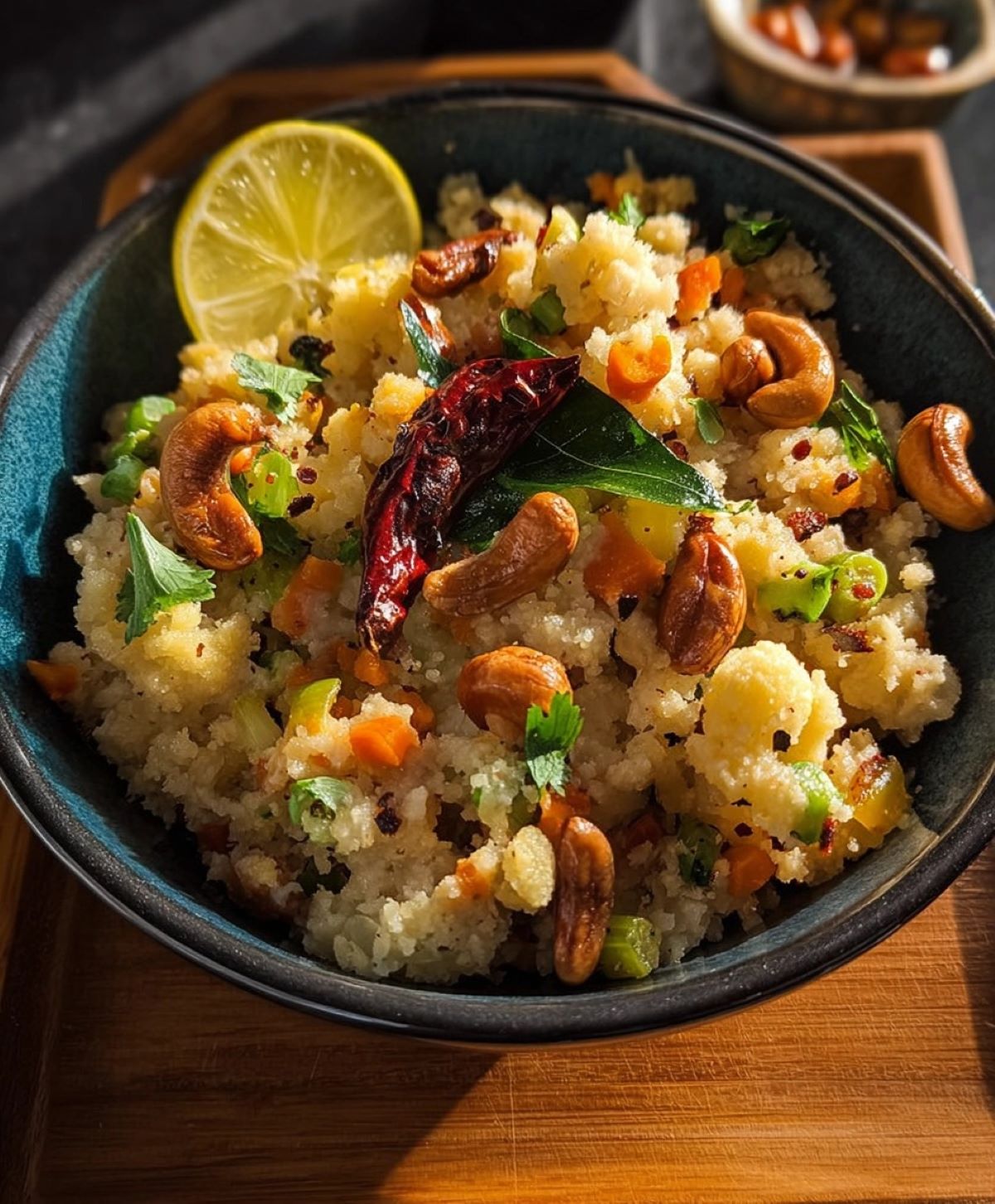

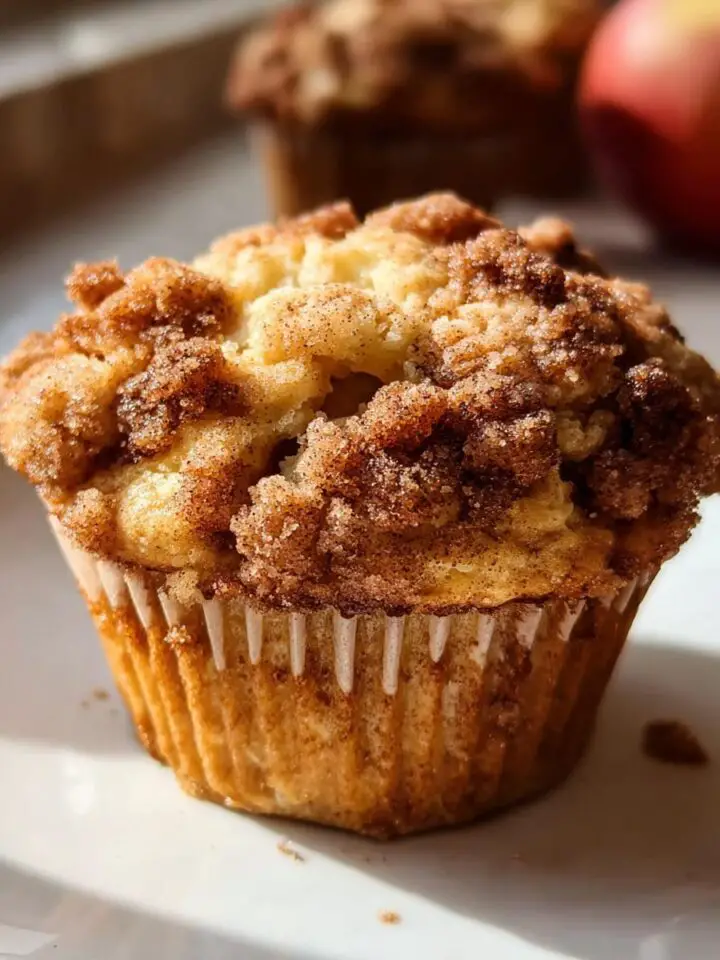
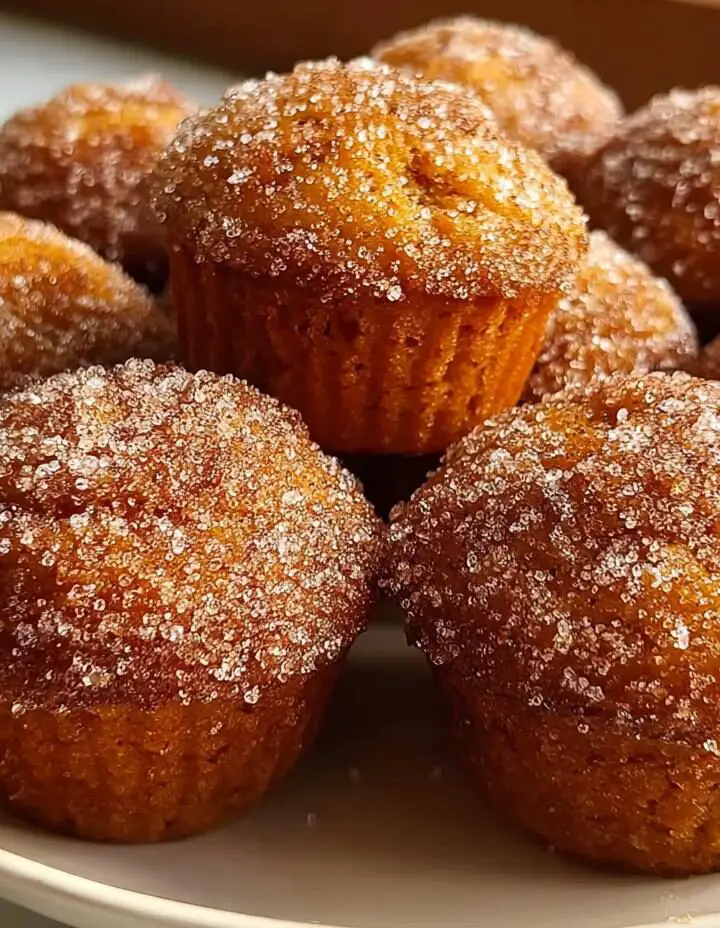
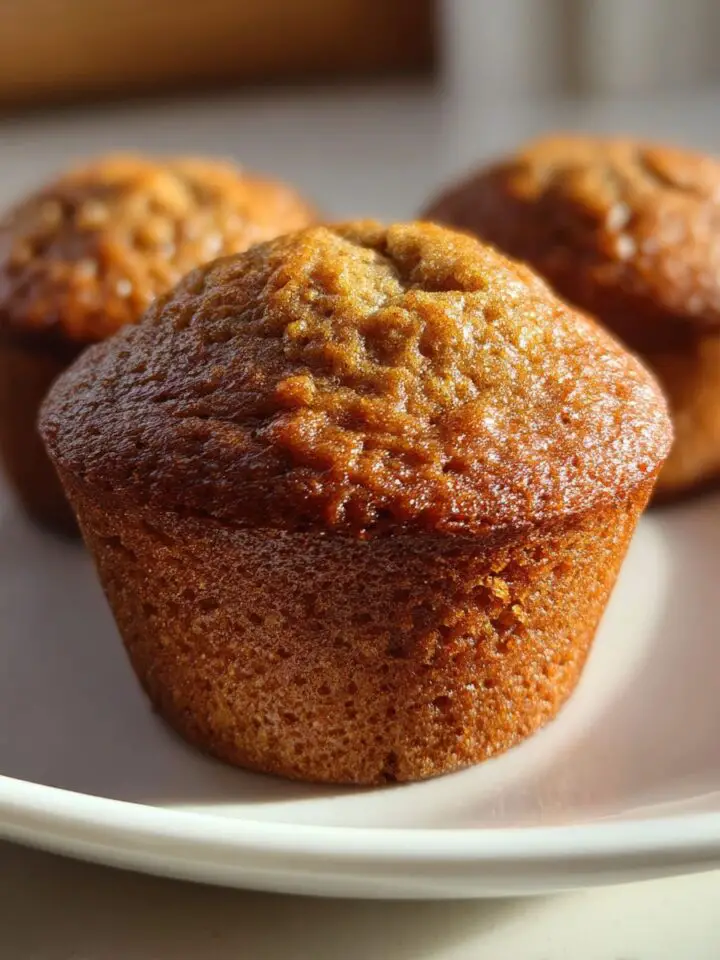
Leave a Reply